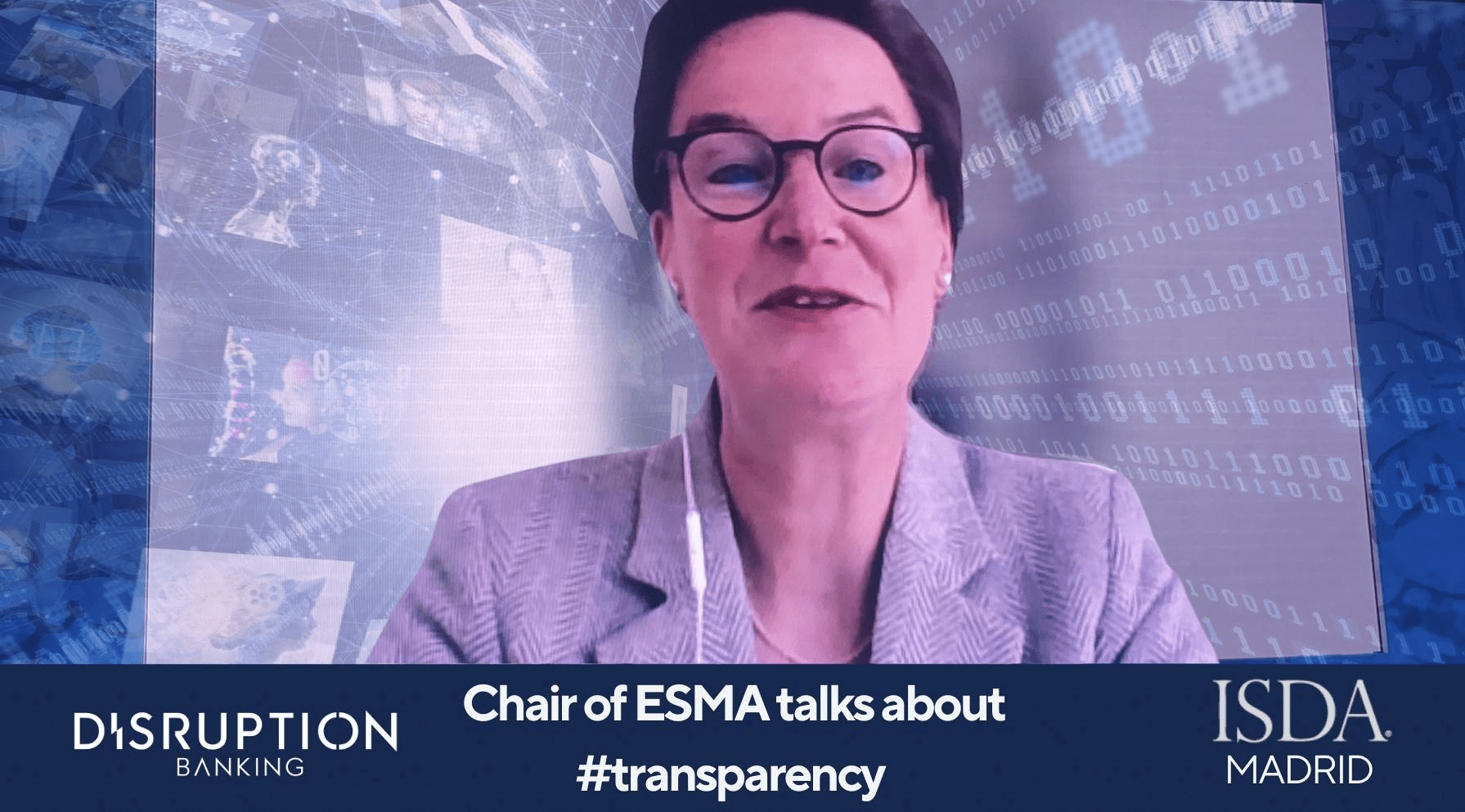Last week, the Chair of the European Securities and Markets Authority (ESMA), Verena Ross, addressed the International Swaps and Derivatives Association (ISDA). Ross spoke at length on “the multifaceted concept of transparency,” and particularly on how digitalisation can allow authorities such as ESMA to become more transparent.
Verena Ross, Chair of ESMA, talks transparency at #isdaagm. pic.twitter.com/21SOh14frm
— #DisruptionBanking (@DisruptionBank) May 12, 2022
Ross argued that a number of new technologies and digital solutions are helping to improve transparency, both within ESMA internally and across the markets it supervises. She pointed to how technology can facilitate “the standardised reporting of information,” as well as “easy access to this information,” to demonstrate how the management of supervisory data is being improved. New trends within the space, such as RegTech, are contributing to this, Ross added. These trends “will have an important impact on the way supervisory data is generated by reporting entities to the authorities,” and ESMA is “following these exciting developments closely,” Ross said.
One of the ideas that both market participants and authorities are exploring is the concept of machine readable and executable reporting. Indeed, as Ross noted, ISDA has also looked at this with its Digital Regulatory Reporting (DRR) initiative. The idea of this technology is to allow regulators to provide reporting rules as executable computer codes, that can be automatically read by the IT systems of reporting entities. While Ross acknowledged that “there are still many aspects to be assessed further,” such as how much money should initially be invested in the technology, she is hopeful that it could reap significant benefits. In particular, Ross believes new technologies could “bring down the long-term costs for reporting entities, reduce mistakes related to the interpretation of regulations and, consequently, improve the quality of data available to the authorities.”
“Digital Regulatory Reporting-related initiatives have collectively demonstrated the potential to improve the regulatory reporting process” according to a new paper on DRR from @ISDA.
— REGnosys (@REGnosys) March 30, 2022
Read ISDA's full paper here: https://t.co/ZLM3Pn9sye pic.twitter.com/3lT37kKCeR
The ESMA Chair also argued that technology is helping the authorities to process an ever-larger volume of information. Ross pointed out that “we have experienced an exponential growth of data available to authorities through new reporting machines.” Other sources of data, such as those accessible over the internet or through commercial providers, are now being used in conjunction with “formal reporting regimes.” While this is adding to the “richness” of information available, it can be challenging to process, Ross outlined.
Because of both the “volume and complexity of data” that ESMA is attempting to manage, Ross argued that “new technologies, such as Big Data and Artificial Intelligence, are becoming increasingly important.” It is by using such technologies that the authorities are able to sift through large quantities of data to “derive actionable information.”
As a result, ESMA is devoting significant resources to upscaling tech infrastructure. This year, for example, the authority launched a new Big Data IT platform that can analyse transaction data. Ross said “this was an important step” as ESMA is now able “to fully exploit […] the rich transactions reporting data.” With the platform being expanded to include more data sets, this will allow ESMA “to get the most value out of the data,” and, ultimately, help ESMA monitor and assess risk in European markets more effectively.
🎙️ #VerenaRoss' keynote speech on #ESMA’s priorities for transparency at @ISDAConferences #isdaagm
— ESMA – EU Securities Markets Regulator 🇪🇺 (@ESMAComms) May 12, 2022
✔️ the non-equity transparency regime of MiFIR with a focus on derivatives
✔️ enhancing #transparency through new technologies
✔️ transparency in the 🇪🇺 carbon market and beyond
Ross ended by noting the work that is being done to integrate data-collection on a European level. At the moment, information disclosed by companies and market players is “fragmented.” Some information is collected and made available at a national level, while others report directly to a European level. There are also differences in formatting and language. The ESMA Chair called this “an important barrier for investors” and therefore explained that ESMA is aiming to create a “common source of public and freely available financial and sustainability-related information.” This would cover a range of companies and investment products. Once the relevant legislation is in place, ESMA plans to launch a single “user-friendly web portal” and is envisaged as significantly simplifying the data-collection process.
Digitalisation is transforming how businesses and authorities function across financial markets, and it appears ESMA is no different. Ross’ address to the ISDA AGM demonstrated an eagerness to dedicate time, money and resources to ensure the European regulator is taking full advantage of new technologies – and thereby improving its effectiveness.
Author: Harry Clynch
#isdaagm #ISDA #ESMA #Digitalisation #AI #BigData















